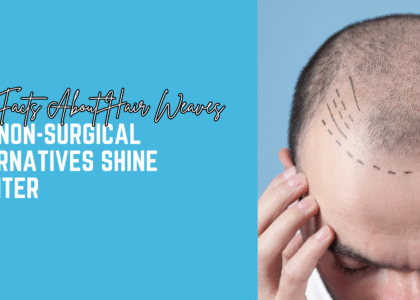Hair loss, while often associated with men, is a significant issue that affects women worldwide. It can be a distressing experience, impacting self-esteem and quality of life. Understanding the factors contributing to hair loss in women is essential for developing effective treatment and prevention strategies. This blog explores the various causes, ranging from genetics to lifestyle choices, and offers insights into potential remedies and management techniques. Hair loss, or alopecia, can manifest in several forms and can be triggered by many factors. While shedding a few hairs daily is normal, excessive hair loss can be alarming and may indicate underlying health issues. Women’s Hair loss can be particularly troubling due to societal standards of beauty and femininity associated with lush, full hair.
Types of Hair Loss
Understanding the different types of hair loss is crucial for identifying the cause and appropriate treatment. The main types of hair loss affecting women include:
1. Androgenetic Alopecia
Androgenetic alopecia, commonly known as female pattern baldness, is the most common type of hair loss in women. It is primarily influenced by genetics and hormonal changes. Women typically experience thinning on the top and crown of the scalp, while the front hairline remains intact. This condition is progressive and can worsen over time if left untreated.
2. Telogen Effluvium
Telogen effluvium is characterized by temporary hair thinning and occurs when a large number of hair follicles enter the resting (telogen) phase simultaneously. This can be triggered by various factors, including physical or emotional stress, illness, surgery, or significant weight loss. Hair usually regrows once the underlying issue is resolved.
3. Alopecia Areata
Alopecia areata is an autoimmune disorder where the body’s immune system attacks hair follicles, leading to patchy hair loss. The exact cause is unknown, but it is believed to involve a combination of genetic and environmental factors. In severe cases, it can progress to alopecia totalis (complete scalp hair loss) or alopecia universalis (total body hair loss).
4. Traction Alopecia
Traction alopecia is caused by prolonged tension on the hair, often due to tight hairstyles such as braids, ponytails, or extensions. This type of hair loss is preventable and reversible if detected early and the damaging hairstyles are avoided.
5. Anagen Effluvium
Anagen effluvium is rapid hair loss resulting from damage to the hair follicles during the anagen (growth) phase. It is commonly associated with chemotherapy and radiation treatments for cancer. Hair typically regrows after treatment cessation, although the texture and colour may change.
Causes of Hair Loss in Women
Hair loss in women can result from a variety of factors, including genetic predisposition, hormonal imbalances, medical conditions, medications, and lifestyle choices. Understanding these causes can help in devising effective treatment plans.
1. Genetic Factors
Genetics play a significant role in hair loss. Women with a family history of androgenetic alopecia are more likely to experience this condition. The hereditary pattern is influenced by genes from both parents, affecting the sensitivity of hair follicles to androgens (male hormones).
2. Hormonal Imbalances
Hormonal changes can have a profound impact on hair growth. Several conditions and life stages can alter hormone levels, leading to hair loss:
- Menopause: During menopause, estrogen levels decline, which can lead to hair thinning and increased hair loss.
- Pregnancy and Postpartum: Hormonal fluctuations during and after pregnancy can cause temporary hair shedding known as postpartum telogen effluvium.
- Polycystic Ovary Syndrome (PCOS): PCOS can cause elevated levels of androgens, leading to hair thinning and pattern hair loss.
3. Medical Conditions
Several medical conditions can contribute to hair loss in women:
- Thyroid Disorders: Both hyperthyroidism and hypothyroidism can cause hair thinning and loss.
- Autoimmune Diseases: Conditions like lupus and alopecia areata can lead to significant hair loss.
- Scalp Infections: Fungal infections, such as ringworm, can damage hair follicles and cause hair loss.
- Chronic Illness: Diseases like diabetes and severe infections can result in hair thinning.
4. Medications
Certain medications can have hair loss as a side effect. These include:
- Chemotherapy Drugs: Used in cancer treatment, these drugs target rapidly dividing cells, including hair follicles.
- Antidepressants: Some antidepressants can cause hair thinning.
- Blood Thinners: Medications like heparin and warfarin can lead to hair loss.
- Beta-Blockers: Used for heart conditions, these drugs can contribute to hair thinning.
5. Nutritional Deficiencies
A balanced diet is crucial for healthy hair growth. Deficiencies in essential nutrients can lead to hair loss:
- Iron: Iron deficiency anaemia is a common cause of hair thinning.
- Protein: A lack of dietary protein can result in hair loss since hair is primarily composed of protein.
- Vitamins: Deficiencies in vitamins like vitamin D, B vitamins, and vitamin E can impact hair health.
6. Physical and Emotional Stress
Stress can trigger hair loss in women. Physical stressors, such as surgery or severe illness, and emotional stressors, such as grief or anxiety, can cause hair follicles to enter the resting phase prematurely, leading to telogen effluvium.
7. Hair Care Practices
Certain hair care practices can contribute to hair loss:
- Heat Styling: Frequent use of heat styling tools can damage hair and cause breakage.
- Chemical Treatments: Harsh chemicals in hair dyes, perms, and relaxers can weaken hair and lead to loss.
- Tight Hairstyles: Prolonged use of tight hairstyles can cause traction alopecia.
Diagnosis and Treatment
Accurate diagnosis is essential for effective treatment of hair loss. A healthcare professional will typically conduct a thorough examination, review medical history, and perform diagnostic tests, such as blood tests or scalp biopsies, to determine the underlying cause.
1. Medical Treatments
Several medical treatments are available for hair loss in women:
- Minoxidil: An over-the-counter topical solution that can stimulate hair growth and slow hair loss.
- Finasteride: A prescription oral medication that can reduce androgen levels and slow hair loss.
- Spironolactone: An anti-androgen medication that can be effective for women with hormonal hair loss.
- Corticosteroids: Injections or topical applications to reduce inflammation and suppress the immune system in conditions like alopecia areata.
2. Hair Transplant Surgery
For women with significant hair loss, hair transplant surgery may be an option. This procedure involves transplanting hair follicles from a donor site (usually the back of the scalp) to the thinning or balding areas. It can provide a permanent solution, although it may require multiple sessions.
3. Lifestyle and Home Remedies
Several lifestyle changes and home remedies can support hair health and reduce hair loss:
- Balanced Diet: Ensure adequate intake of essential nutrients, including iron, protein, and vitamins.
- Stress Management: Practice stress-reducing techniques such as meditation, yoga, or counselling.
- Gentle Hair Care: Avoid harsh hair care practices and use mild, sulfate-free shampoos and conditioners.
- Proper Hair Handling: Avoid tight hairstyles and minimize the use of heat styling tools.
4. Alternative Therapies
Some women find relief from hair loss through alternative therapies:
- Acupuncture: This may stimulate hair follicles and improve blood flow to the scalp.
- Herbal Supplements: Supplements like saw palmetto and biotin are believed to support hair health.
- Scalp Massage: Regular scalp massage can improve circulation and promote hair growth.
Psychological Impact and Support
Hair loss can have a profound psychological impact on women, leading to anxiety, depression, and reduced self-esteem. Seeking support from friends, family, or a mental health professional can be beneficial. Support groups and online communities can also provide a sense of solidarity and understanding.
Conclusion
Hair loss in women is a multifaceted issue with numerous potential causes, ranging from genetic and hormonal factors to lifestyle choices and medical conditions. Understanding the underlying cause is crucial for effective treatment and management. While hair loss can be a distressing experience, there are various treatment options and lifestyle changes that can help mitigate its effects and promote healthy hair growth. By addressing both the physical and psychological aspects of hair loss, women can regain confidence and improve their overall well-being.
For personalized guidance on women’s hair loss, visit Look Masters. As the best non-surgical hair replacement center in Chandigarh, we’re here to help. Contact us anytime for expert support and solutions.












